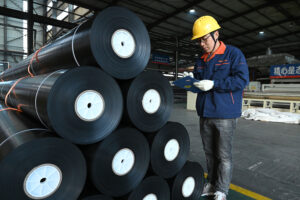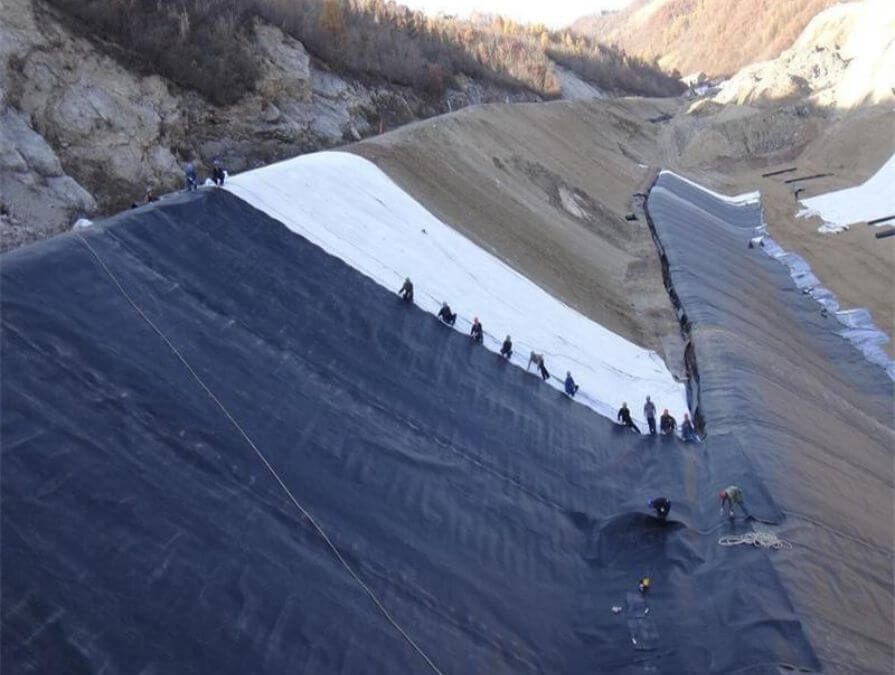Geomembrane is a material used in soil protection and earthworks, also known as geosynthetics or geosynthetics. It is usually made of high molecular materials such as polyethylene (PE) or polypropylene (PP), and has good permeability resistance, chemical corrosion resistance and aging resistance.
Rigid and flexible geomembranes are two common types of geomembranes, which differ in material properties and application fields.

Rigid Geomembrane:
Material: Rigid geomembranes are mainly made of hard materials such as high-density polyethylene (HDPE) or polyvinyl chloride (PVC).
Characteristics: Rigid geomembrane has high compressive strength, stiffness, and deformation resistance, and can maintain good flatness and morphological stability. They are usually single-layer structures, relatively hard and non bending.
Application: Due to its high stiffness and compressive capacity, rigid geomembranes are suitable for projects that require high soil permeability, heavy pressure, or high stiffness, such as road bases, retaining walls, storage tanks, etc.
Flexible Geomembrane:
Material: Flexible geomembranes generally use soft materials, such as low-density polyethylene (LDPE) or linear low-density polyethylene (LLDPE).
Characteristics: Flexible geomembrane has high tear resistance and ductility, and good adaptability. They are usually multi-layer composite structures or reinforced with reinforcing fibers, which have a certain degree of flexibility and plasticity.
Application: Due to its good ductility and flexibility, flexible geomembranes are suitable for projects with large soil deformation and the need to adapt to geological changes, such as sewage infiltration tanks, river restoration, environmental protection construction, etc.

Future Trends of Geomembranes
Firstly, with the acceleration of urbanization and the expansion of construction scale, the application of geomembranes in municipal engineering will become more widespread. For example, in projects such as landfills and sewage treatment plants, a large amount of geomembrane is required for anti-seepage, leak prevention, and other treatments. Therefore, the demand for geomembranes in the field of municipal engineering will continue to grow in the future.
Secondly, agricultural production is also an important application field in the geomembrane industry. Geomembranes are required for anti-seepage treatment in fields such as irrigation and water conservancy construction. Moreover, with the continuous development of rural economy and the improvement of modernization level in China, farmers’ awareness of ecological environment protection is gradually increasing, which will promote the increasing demand for geomembranes in the agricultural field.
The third point is about technological innovation. At present, many domestic and foreign enterprises have begun to research new materials and technologies for geomembranes, such as using biodegradable materials to produce geomembranes. These innovations will further improve the anti-seepage performance and service life of geomembranes, while also helping to reduce environmental pollution.
Finally, with the intensification of global climate change trends, natural disasters are frequent. Geomembranes will also play an important role in flood and drought resistance. In the future, the demand for geomembrane industry will continue to grow in response to natural disasters.
Contact Us
[wpforms id=”40″]


